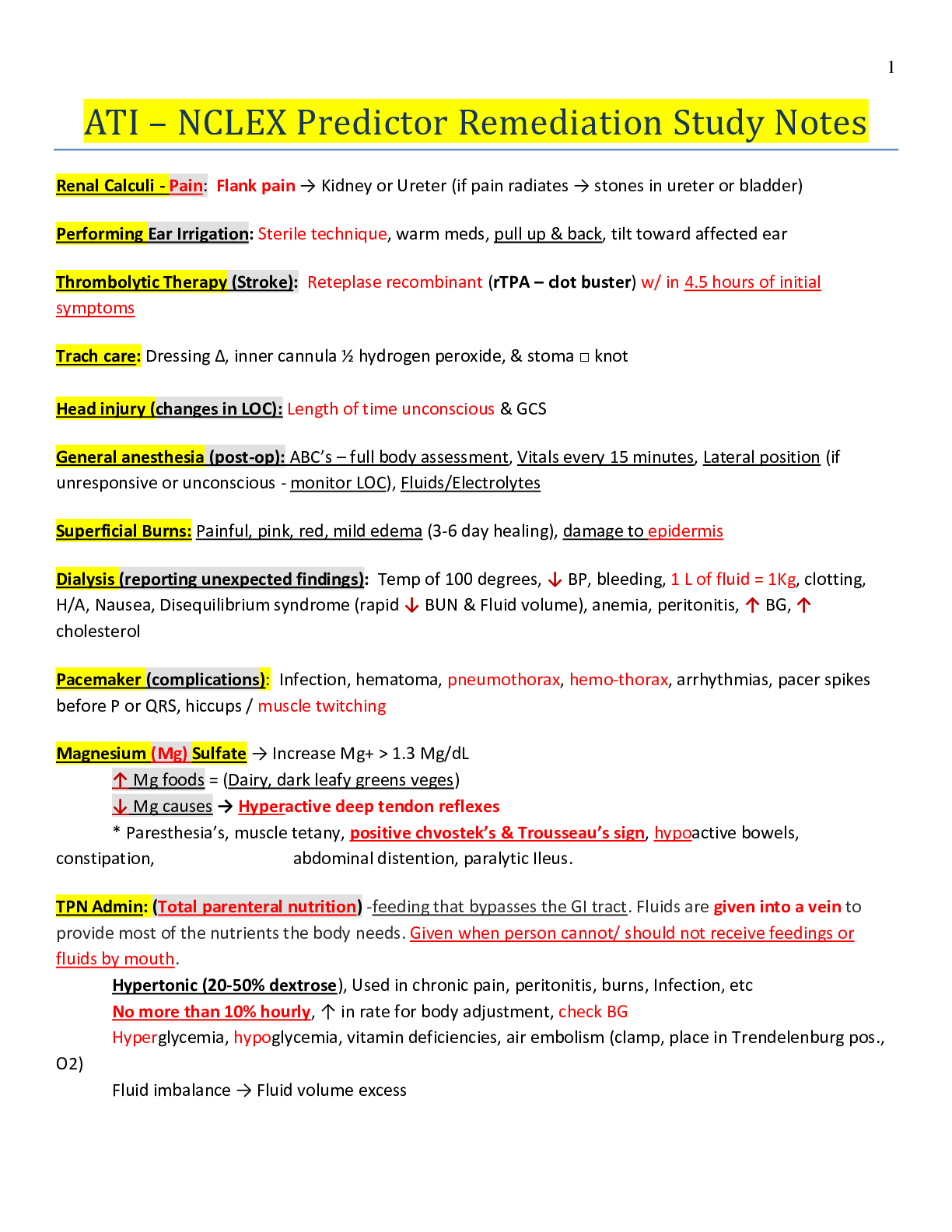*NURSING > STUDY GUIDE > NR 602 Midterm Review Latest Updated 2021 Graded A (All)
NR 602 Midterm Review Latest Updated 2021 Graded A
Document Content and Description Below
NR 602 Midterm Review Chalazion Chalazion is a chronic sterile inflammation of the eyelid resulting from a lipogranuloma of the meibomian glands that line the posterior margins of the eyelids (s... ee Fig. 29-7). It is deeper in the eyelid tissue than a hordeolum and may result from an internal hordeolum or retained lipid granular secretions. Clinical Findings Initially, mild erythema and slight swelling of the involved eyelid are seen. After a few days the inflammation resolves, and a slow growing, round, nonpigmented, painless (key finding) mass remains. It may persist for a long time and is a commonly acquired lid lesion seen in children (see Fig. 29-7). 727 Management • Acute lesions are treated with hot compresses. • Refer to an ophthalmologist for surgical incision or topical intralesional corticosteroid injections if the condition is unresolved or if the lesion causes cosmetic concerns. A chalazion can distort vision by causing astigmatism as a result of pressure on the orbit. Complications Recurrence is common. Fragile, vascular granulation tissue called pyogenic granuloma that enlarges and bleeds rapidly can occur if a chalazion breaks through the conjunctival surface. Types of Conjunctivitis Type Incidence/Etiology Clinical Finding s Diagnosis Management* Ophthalmi a neonat orum Neonates: Chlamydia trachomatis, Staphylococcus aureus, Neisseria gonorrhoeae, HSV (silver nitrate reaction occurs in 10% of neonates) Erythema, chemo sis, purule nt exudat e with N Culture (ELISA, PCR), Gram stain, R/O N. gonorrhoeae, chlamydia Saline irrigation to eyes until exudate gone; follow with erythromycin ointment For N. gonorrhoeae:ceft riaxone or IM or IV 1 Type Incidence/Etiology Clinical Finding s Diagnosis Management* . gonorr hoeae; clear to mucoi d exudat e with chlamy dia For chlamydia: erythromycin or possibly azithromycin PO For HSV: antivirals IV or PO Bacterial conjun ctivitis In neonates 5 to 14 days old, preschoolers, and sexually active teens: Haemophilus influenzae(nontypeable), Streptococcus pneumoniae, S. aureus, N. gonorrhoeae Erythema, chemo sis, itching , burnin g, mucop urulent exudat e, matter in eyelas hes; ↑ in winter Cultures (required in neonate); Gram stain (optional); chocolate agar (for N. gonorrhoeae) R/O pharyngitis, N. gonorrhoeae, AOM, URI, seborrhea Neonates: Erythromycin 0.5% ophthalmic ointment ≥1 year old: Fourth- generation fluoroquinolone For concurrent AOM: Treat accordingly for AOM Warm soaks to eyes three times a day until clear No sharing towels, pillows No school until treatment begins Chronic bacteri al conjun ctivitis School-age children and teens: Bacteria, viruses, C. trachomatis Same as above; foreign body sensati Cultures, Gram stain; R/O dacryostenosis , blepharitis, corneal ulcers, Depends on prior treatment, laboratory results, and differential diagnoses Review 2 Type Incidence/Etiology Clinical Finding s Diagnosis Management* (unres ponsiv e conjun ctivitis previo usly treated as bacteri al in etiolog y) on trachoma compliance and prior drug choices of conjunctivitis treatment Consult with ophthalmologist Inclusion conjun ctivitis Neonates 5 to 14 days old and sexually active teens: C. trachomatis Erythema, chemo sis, clear or mucoi d exudat e, palpeb ral follicle s Cultures (ELISA, PCR), R/O sexual activity Neonates: Erythromycin or azithromycin PO Adolescents: Doxycycline, azithromycin, EES, erythromycin base, levofloxacin PO Viral conjun ctivitis Adenovirus 3, 4, 7; HSV, herpes zoster, varicella Erythema, chemo sis, tearing (bilater al); HSV Cultures, R/O corneal infiltration Refer to ophthalmologist if HSV or photophobia present Cool compresses three or four times a day 3 Type Incidence/Etiology Clinical Finding s Diagnosis Management* and herpes zoster: unilate ral with photop hobia, fever; zoster: nose lesion; spring and fall Allergic and vernal conjun ctivitis Atopy sufferers, seasonal Stringy, mucoi d exudat e, swolle n eyelids and conjun ctivae, itching (key finding ), tearing , palpeb ral follicle s, headac Eosinophils in conjunctival scrapings Naphazoline/pheni ramine, naphazoline/anta zoline ophthalmic solution (see text) Mast cell stabilizer (see text) Refer to allergist if needed 4 Type Incidence/Etiology Clinical Finding s Diagnosis Management* he, rhinitis *See text for dosages. Blepharitis Blepharitis is an acute or chronic inflammation of the eyelash follicles or meibomian sebaceous glands of the eyelids (or both). It is usually bilateral. There may be a history of contact lens wear or physical contact with another symptomatic person. It is commonly caused by contaminated makeup or contact lens solution. Poor hygiene, tear deficiency, rosacea, and seborrheic dermatitis of the scalp and face are also possible etiologic factors. The ulcerative form of blepharitis is usually caused by S. aureus. Nonulcerative blepharitis is occasionally seen in children with psoriasis, seborrhea, eczema, allergies, lice infestation, or in children with trisomy 21. Clinical Findings • Swelling and erythema of the eyelid margins and palpebral conjunctiva 726 • Flaky, scaly debris over eyelid margins on awakening; presence of lice • Gritty, burning feeling in eyes • Mild bulbar conjunctival injection • Ulcerative form: Hard scales at the base of the lashes (if the crust is removed, ulceration is seen at the hair follicles, the lashes fall out, and an associated conjunctivitis is present) Differential Diagnosis Pediculosis of the eyelashes. Management 5 Explain to the patient that this may be chronic or relapsing. Instructions for the patient include: • Scrub the eyelashes and eyelids with a cotton-tipped applicator containing a weak (50%) solution of no-tears shampoo to maintain proper hygiene and debride the scales. • Use warm compresses for 5 to 10 minutes at a time two to four times a day and wipe away lid debris. • At times antistaphylococcal antibiotic (e.g., erythromycin 0.5% ophthalmic ointment) is used until symptoms subside and for at least 1 week thereafter. Ointment is preferable to eye drops because of increased duration of contact with the ocular tissue. Azithromycin 1% ophthalmic solution for 4 weeks may also be used (Shtein, 2014). • Treat associated seborrhea, psoriasis, eczema, or allergies as indicated. • Remove contact lenses and wear eyeglasses for the duration of the treatment period. Sterilize or clean lenses before reinserting. • Purchase new eye makeup; minimize use of mascara and eyeliner. • Use artificial tears for patients with inadequate tear pools. Chronic staphylococcal blepharitis and meibomian keratoconjunctivitis respond to oral erythromycin. Doxycycline, tetracycline, or minocycline can be used chronically in children older than 8 years old. Hand-Foot-Mouth Syndrome Enteroviruses Nonpolio Enteroviruses Of the more than 100 serotypes of nonpolio RNA enteroviruses, 10 to 15 serotypes account for most diseases. They are grouped into four genomic classifications: human 495enteroviruses (HEVs) A, B, C, and D. Coxsackieviruses and echoviruses are subgroups of HEVs. Hand-foot- mouth, herpangina, pleurodynia, acute hemorrhagic conjunctivitis, myocarditis, pericarditis, pancreatitis, orchitis, and dermatomyositis-like syndrome are manifestations of infection. These enteroviruses are the most common cause of aseptic meningitis and have also been associated with paralysis, neonatal sepsis, encephalitis, and other respiratory and GI symptoms. The specific serotype may not be unique to any given disease [Show More]
Last updated: 1 year ago
Preview 1 out of 102 pages
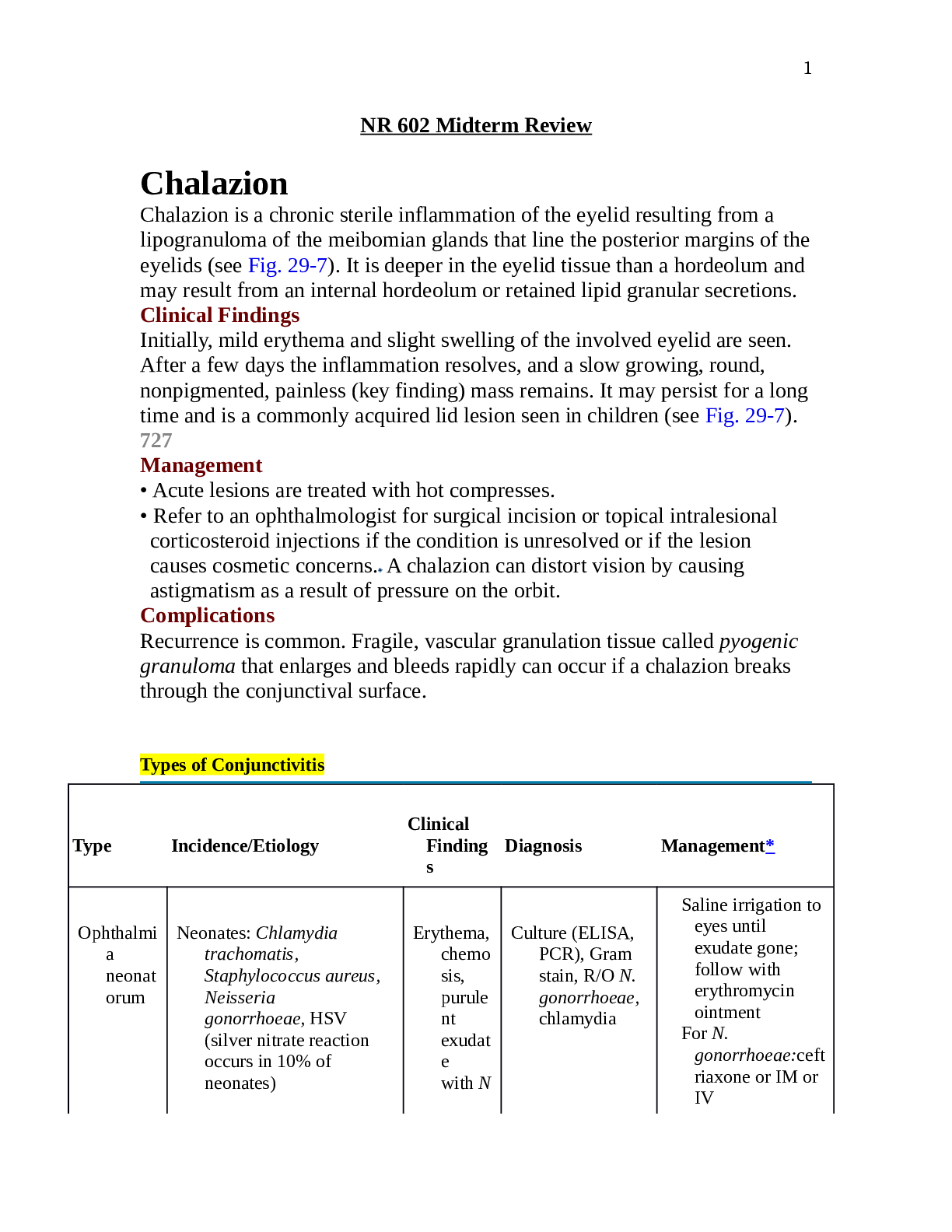
Reviews( 0 )
Document information
Connected school, study & course
About the document
Uploaded On
Sep 29, 2021
Number of pages
102
Written in
Additional information
This document has been written for:
Uploaded
Sep 29, 2021
Downloads
0
Views
58


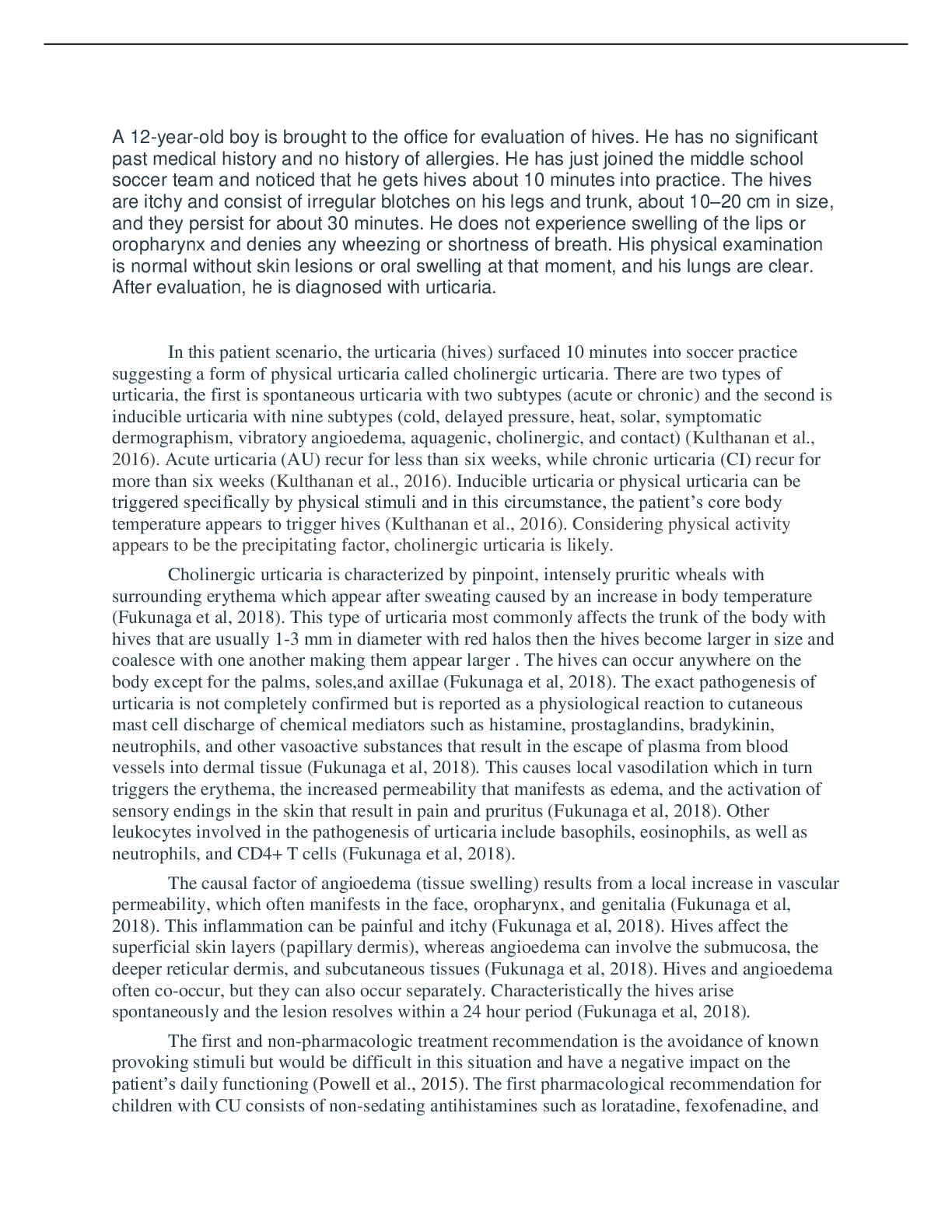

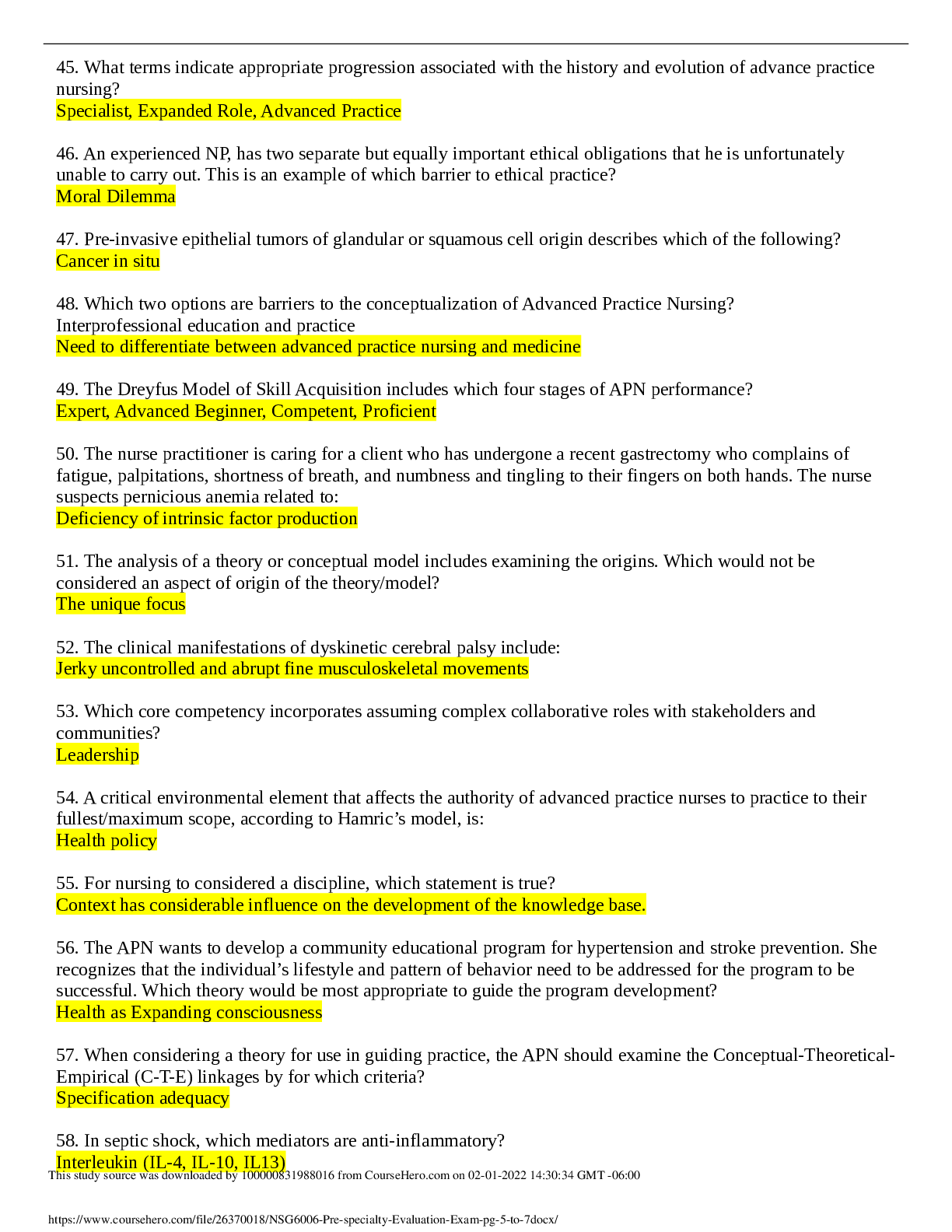

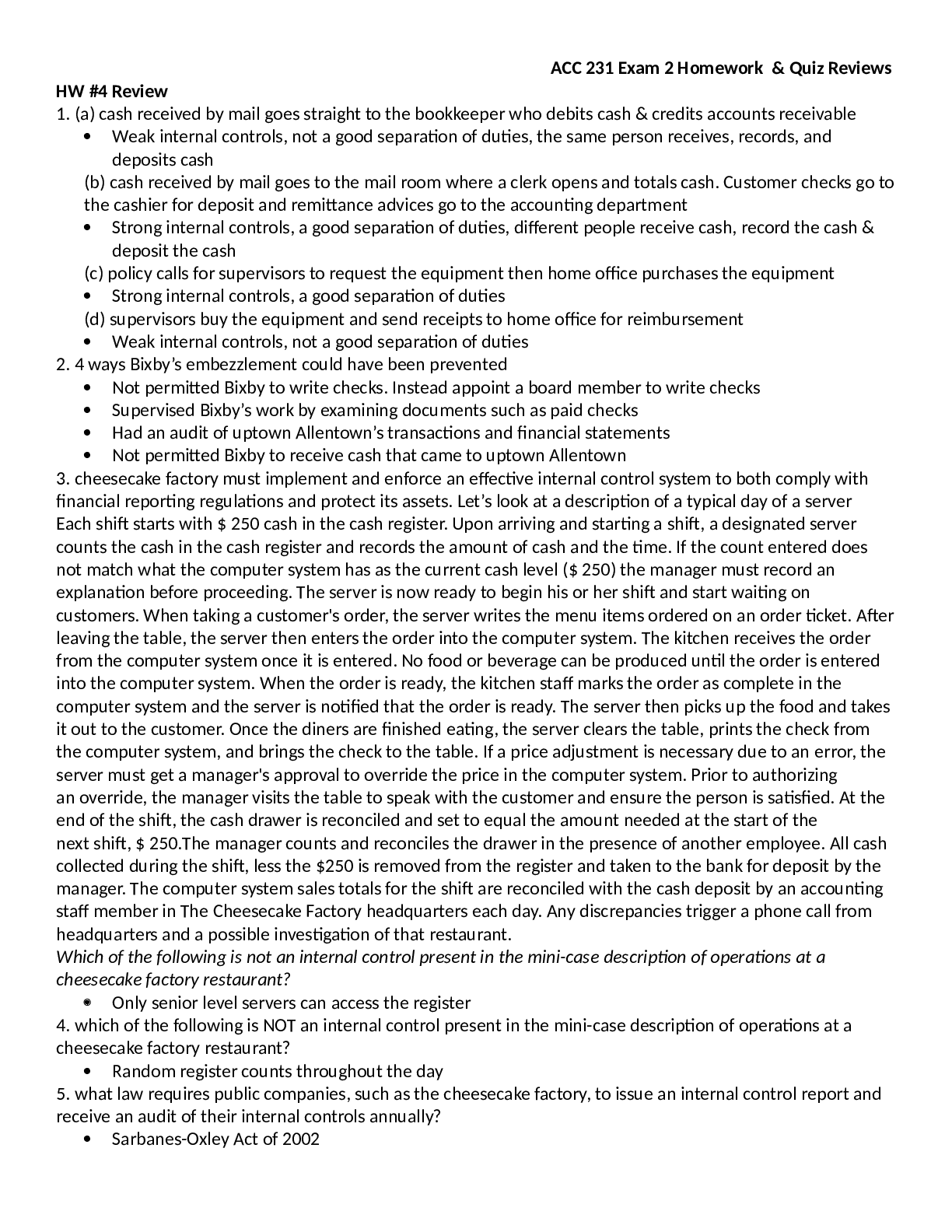

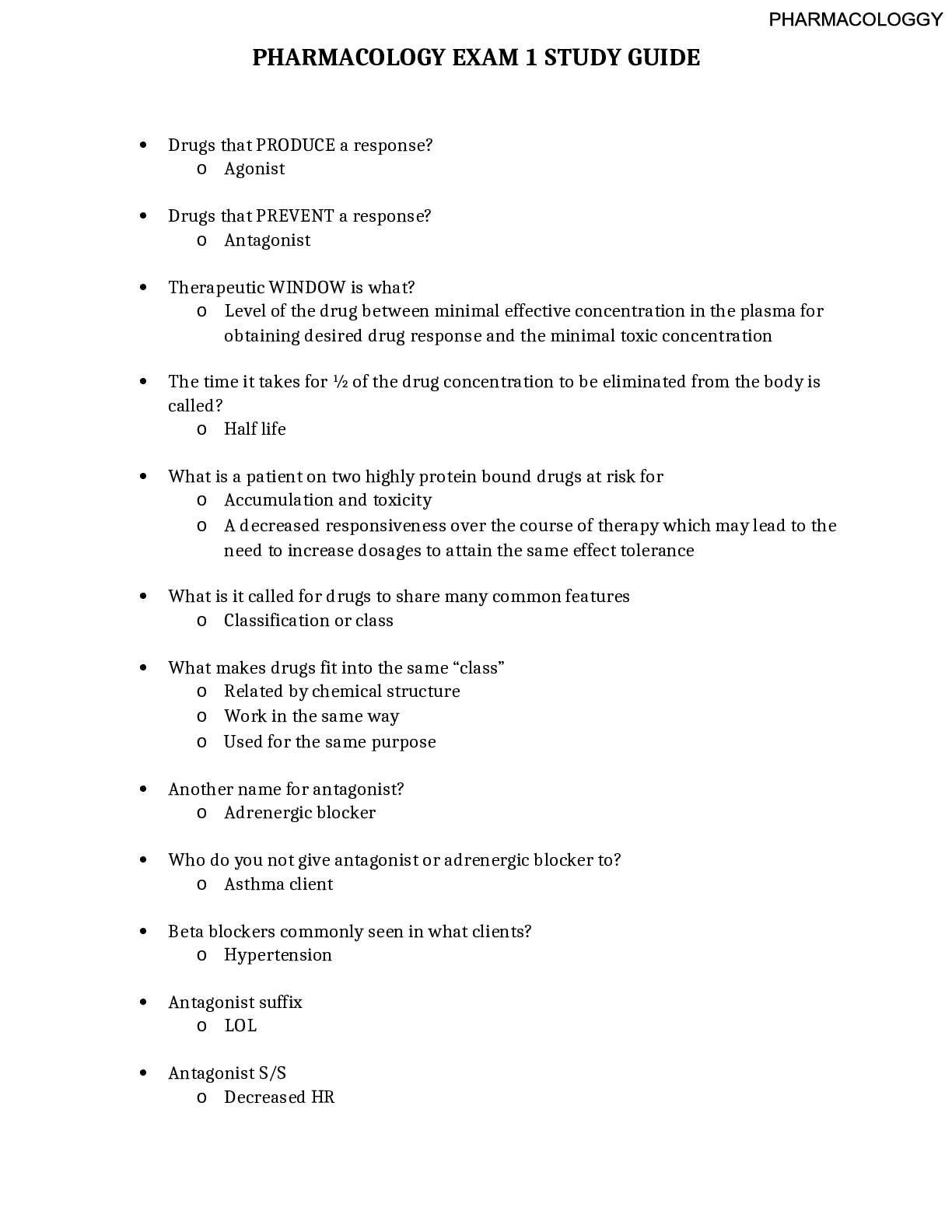

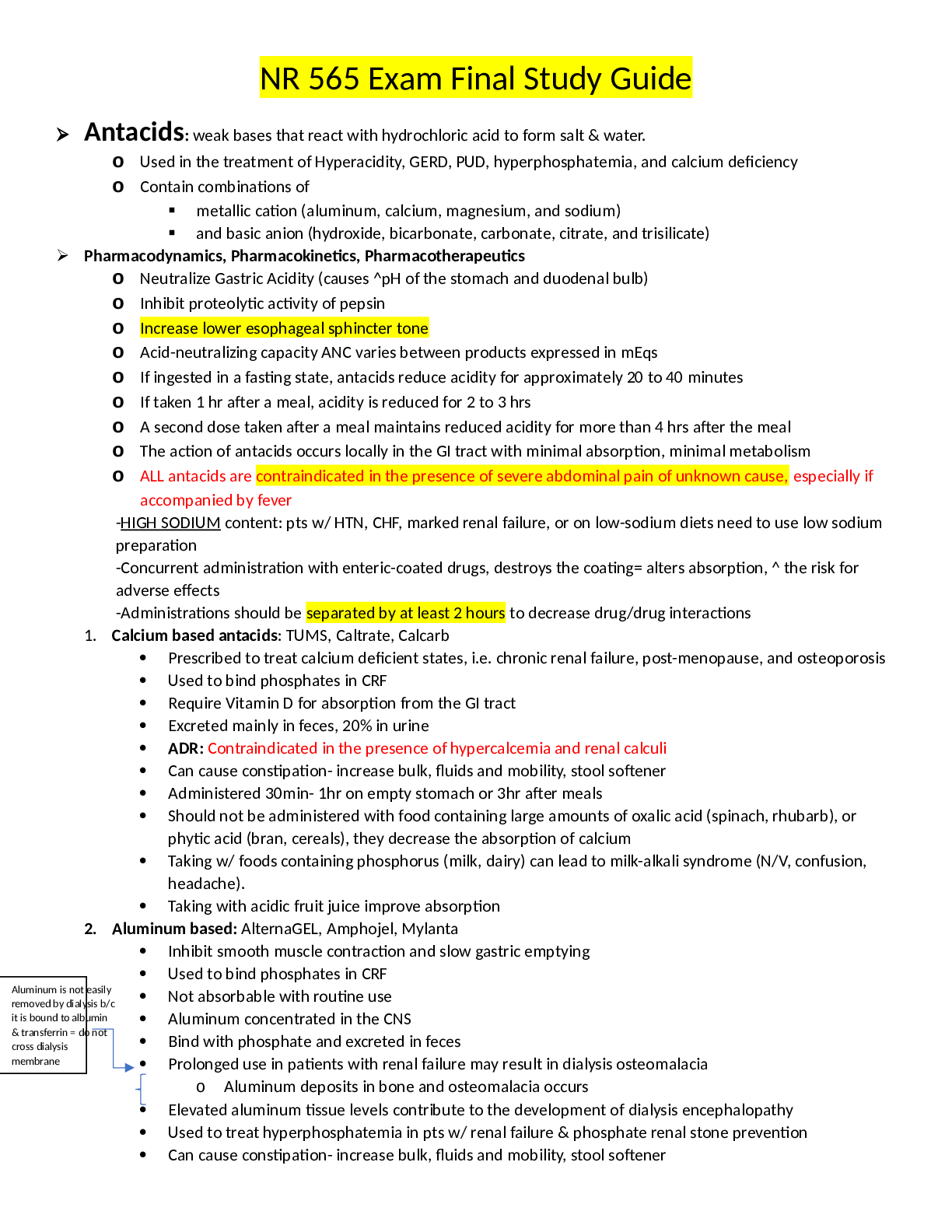


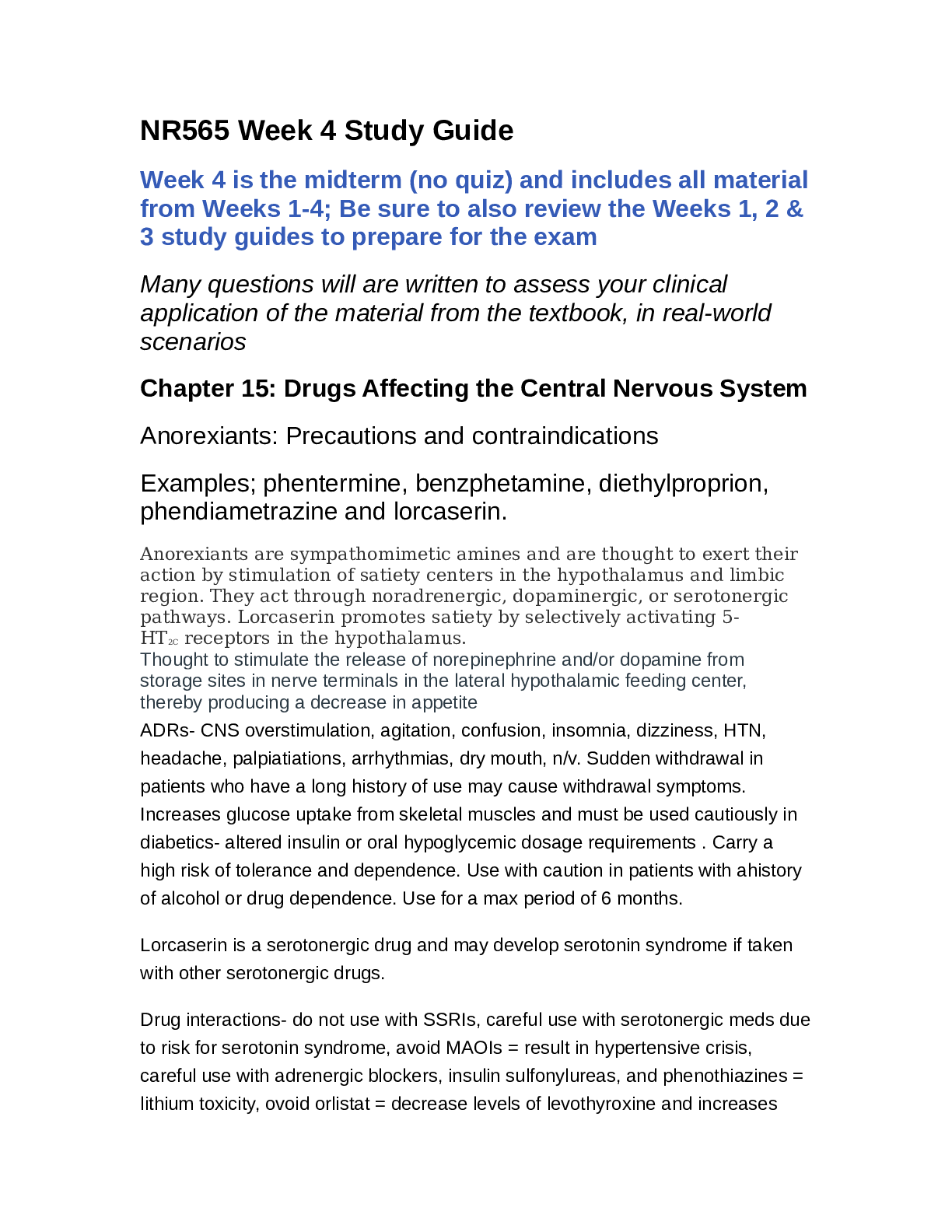

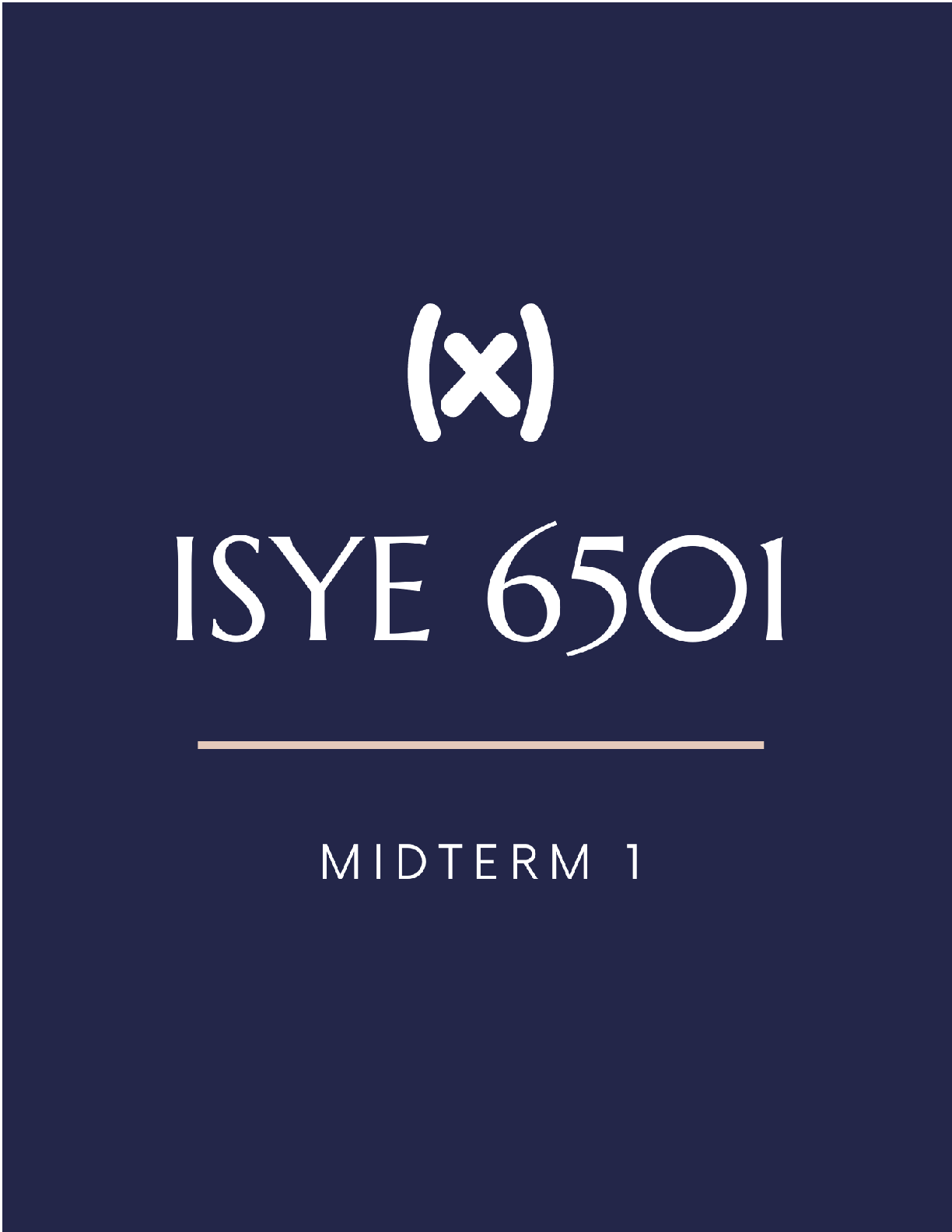
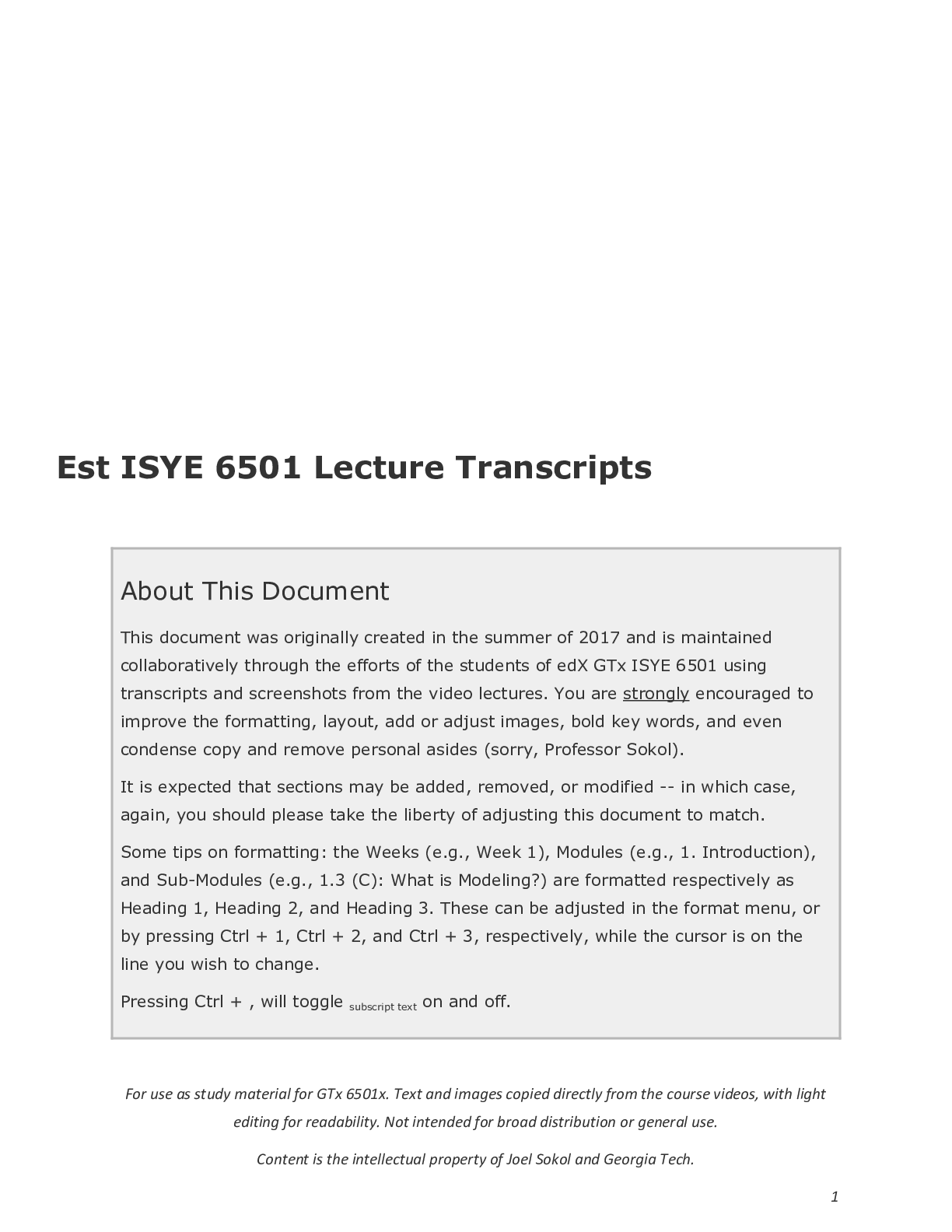
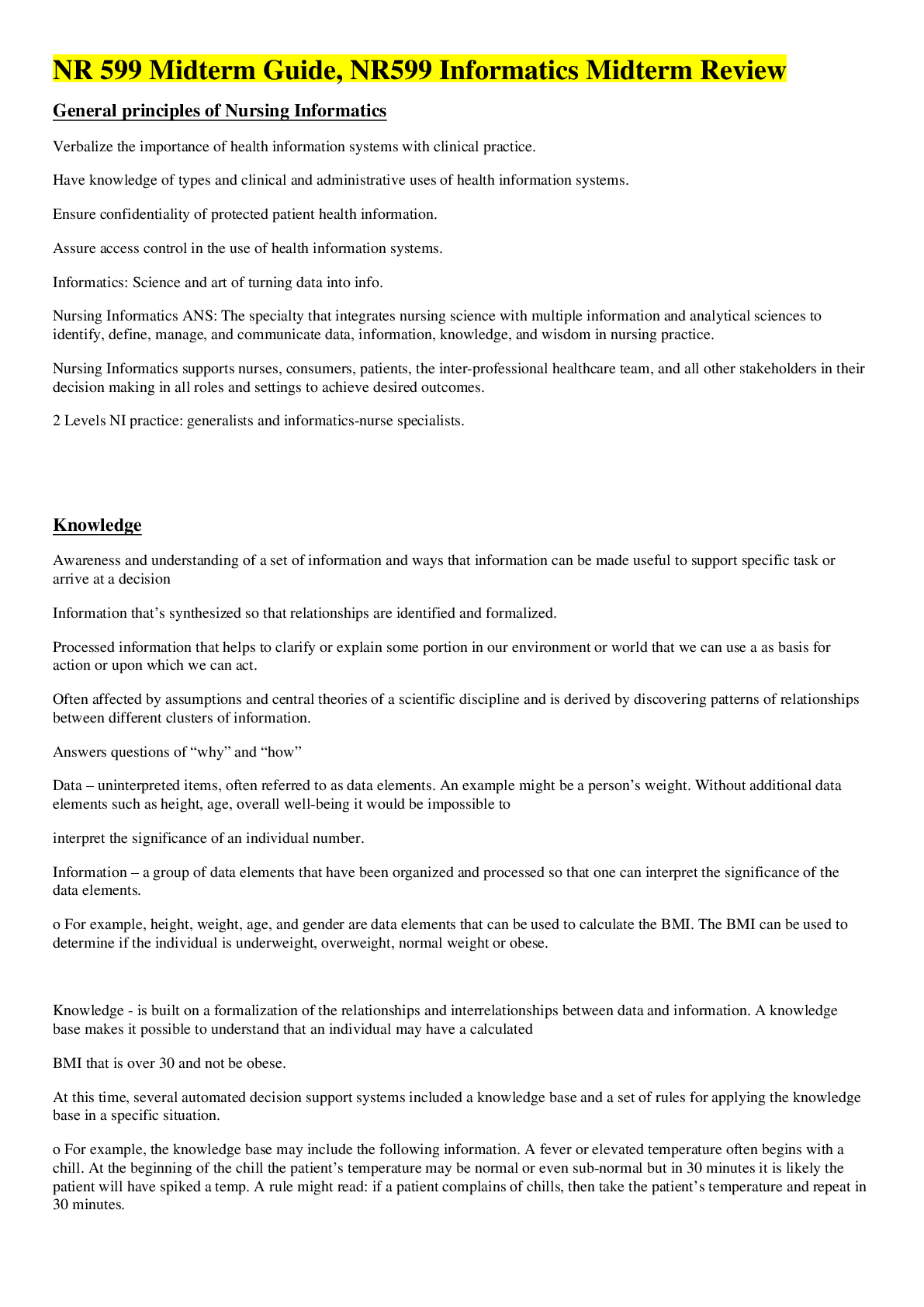
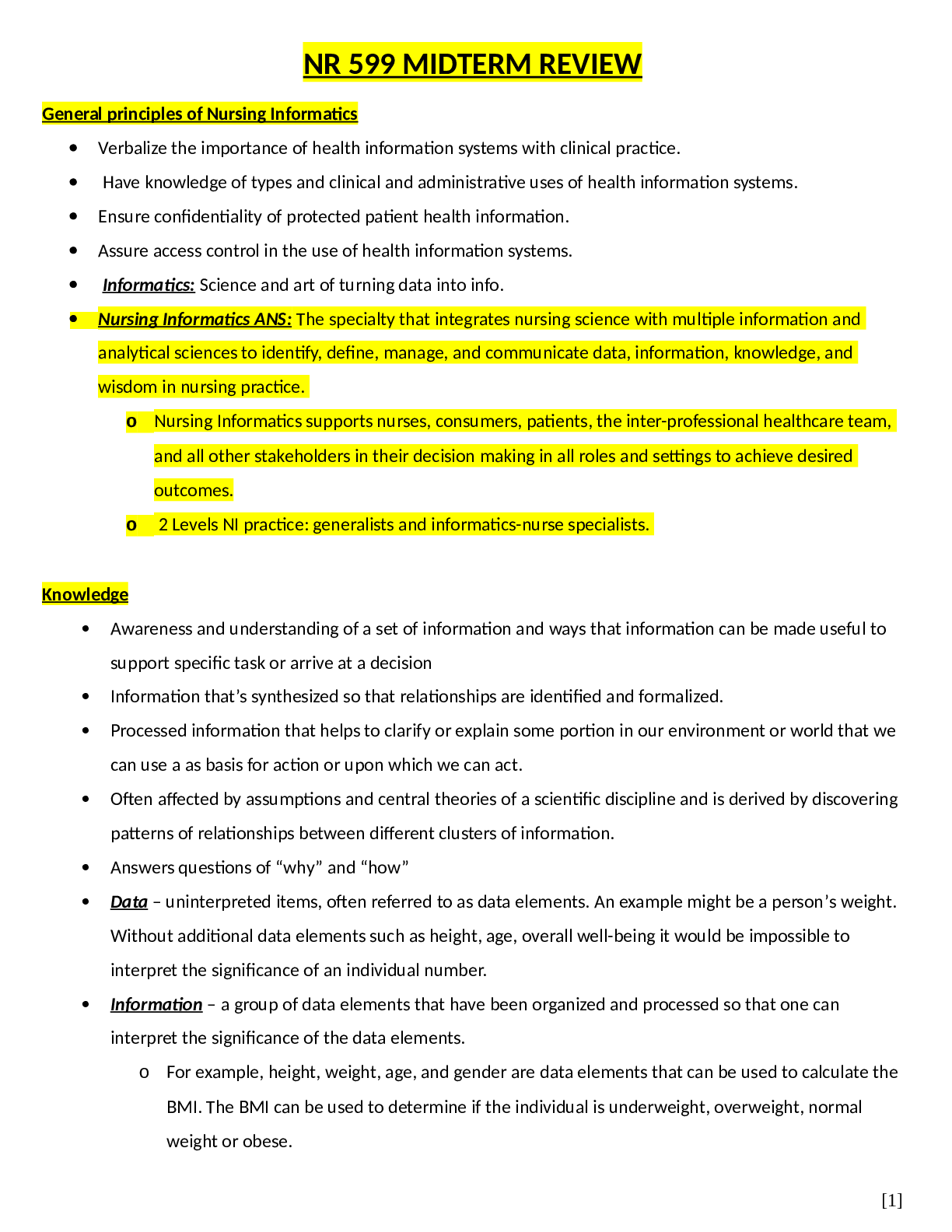
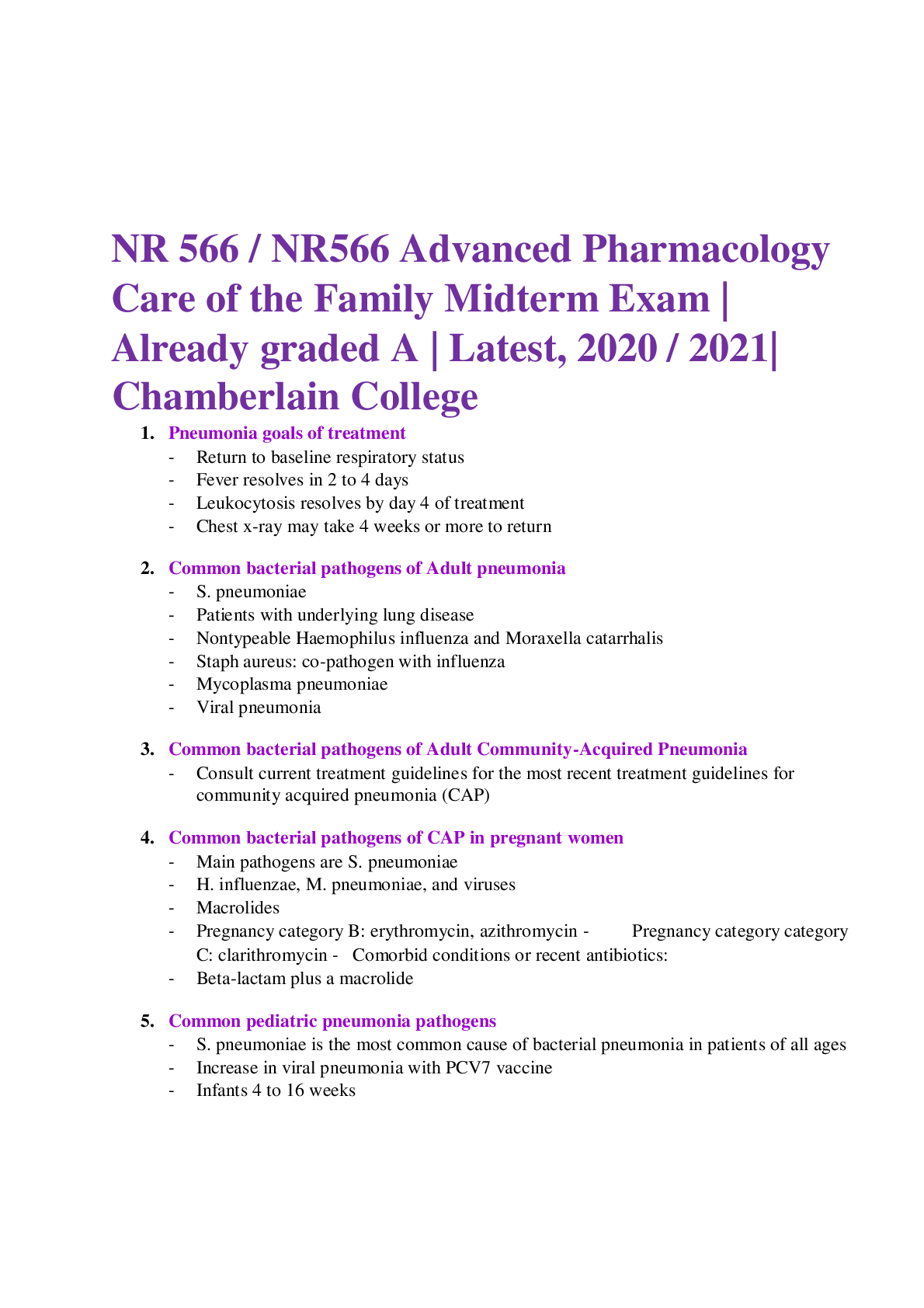
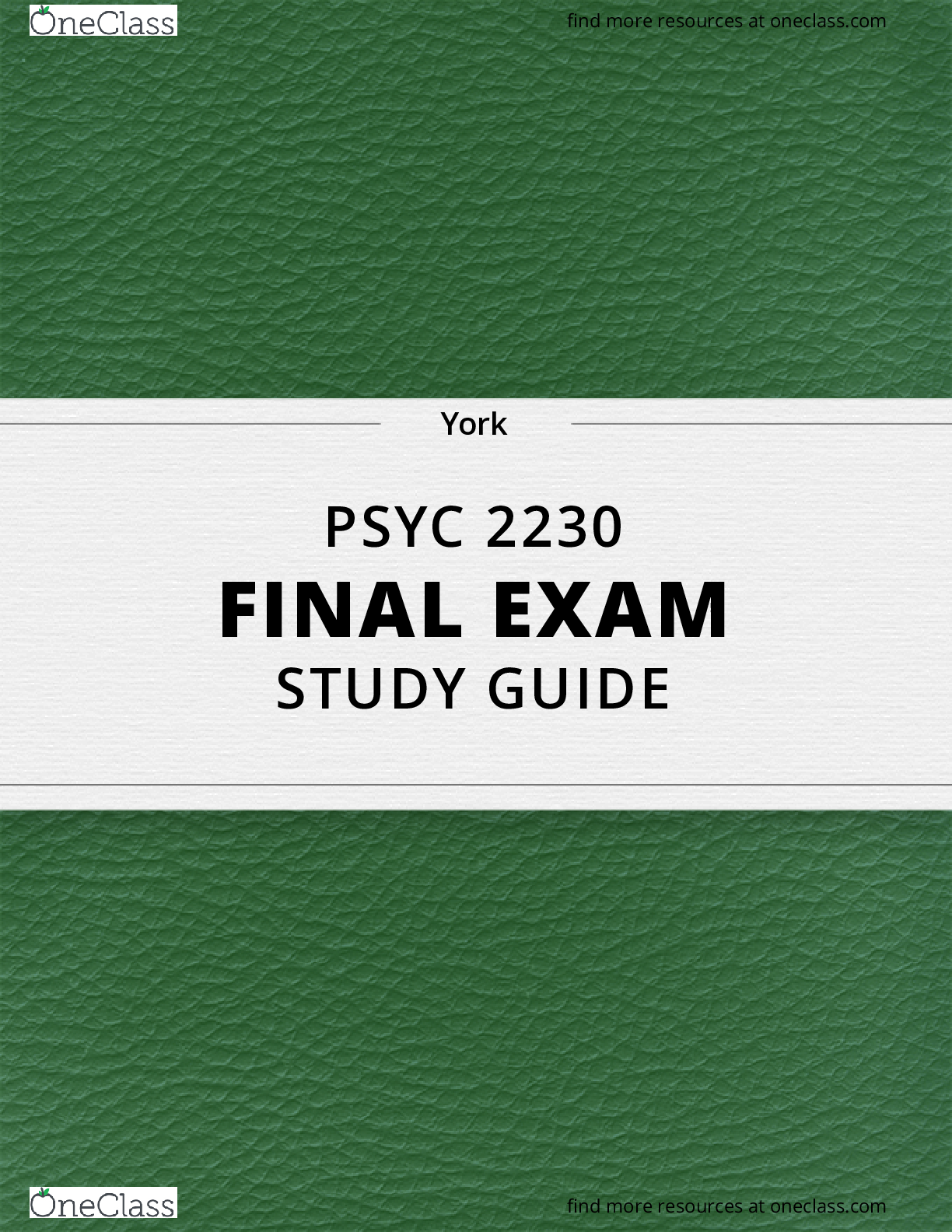
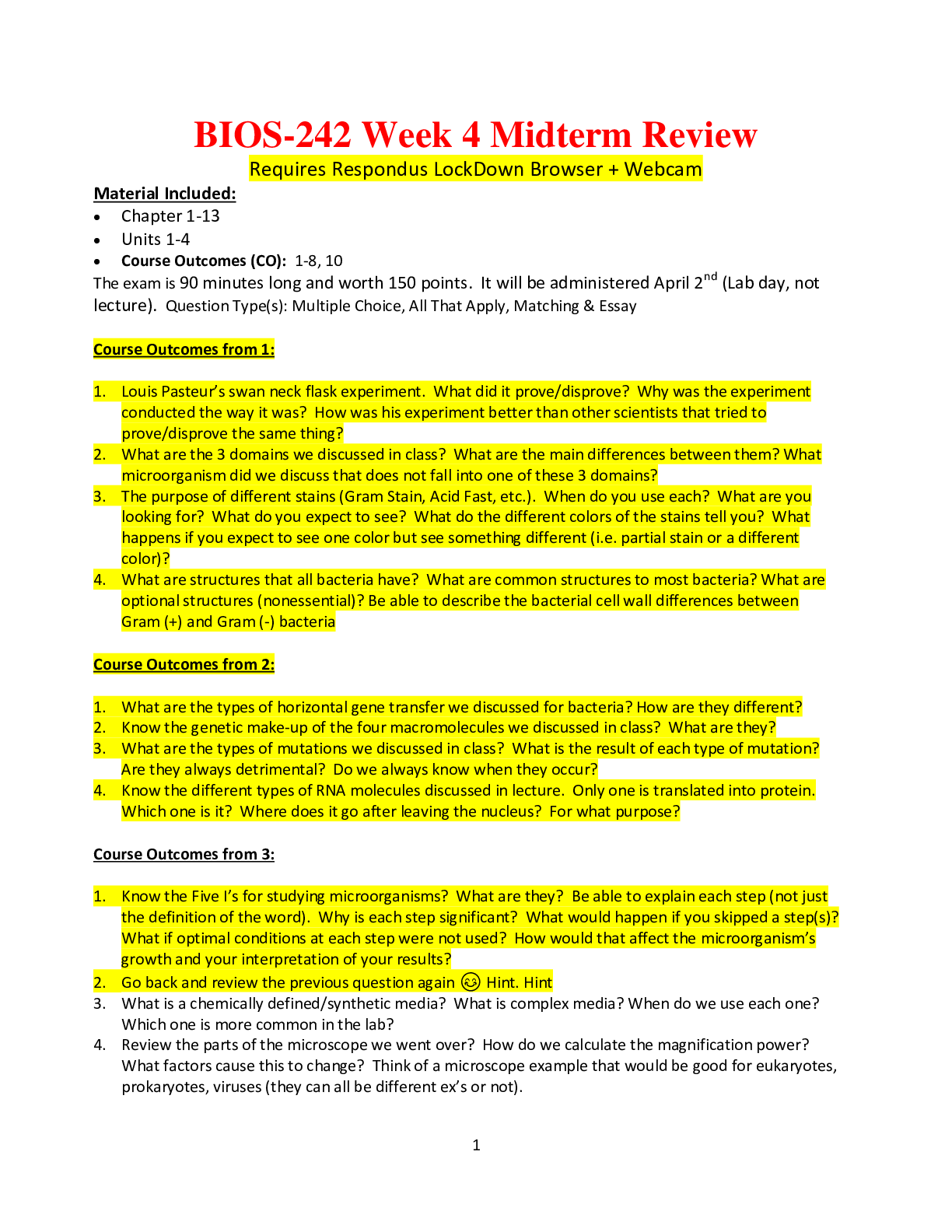
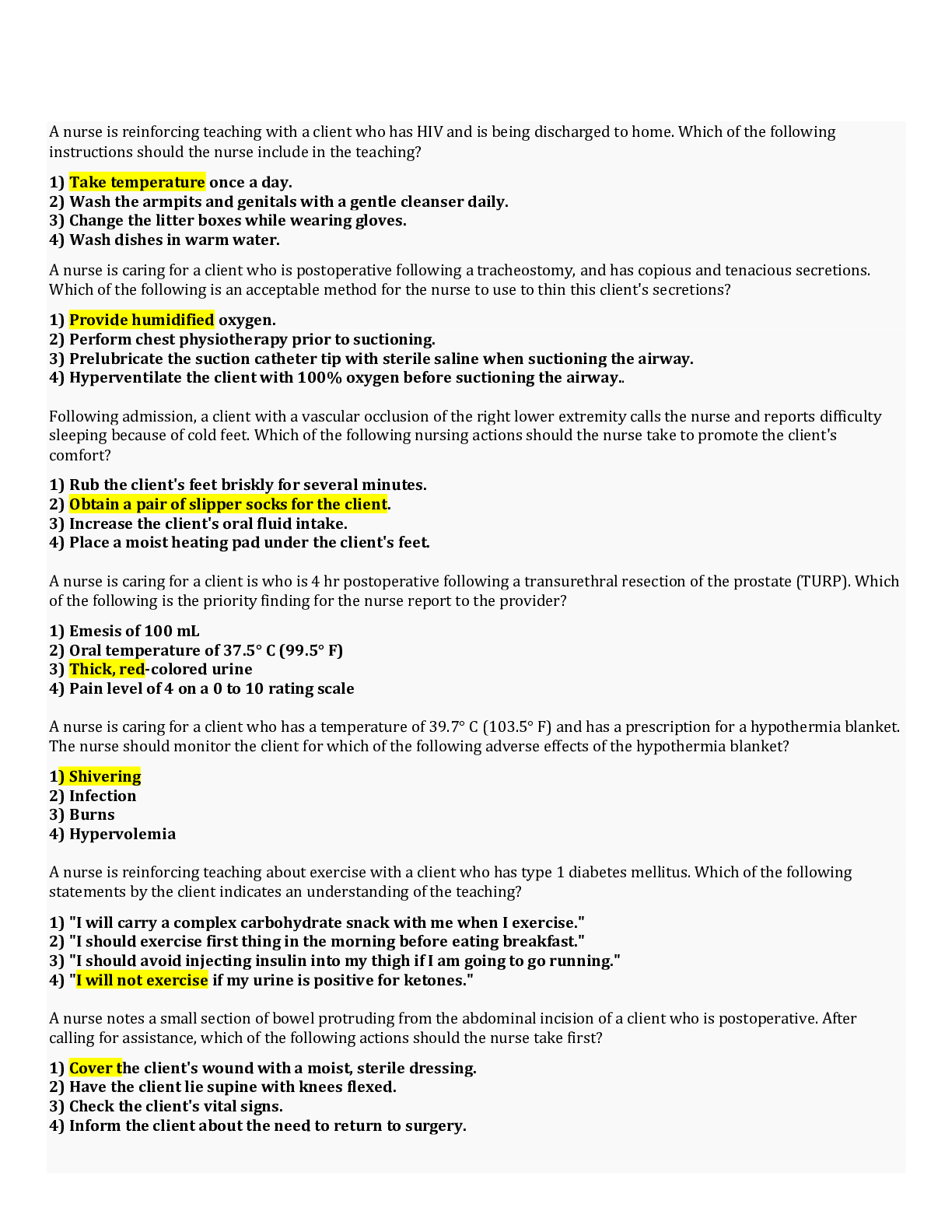

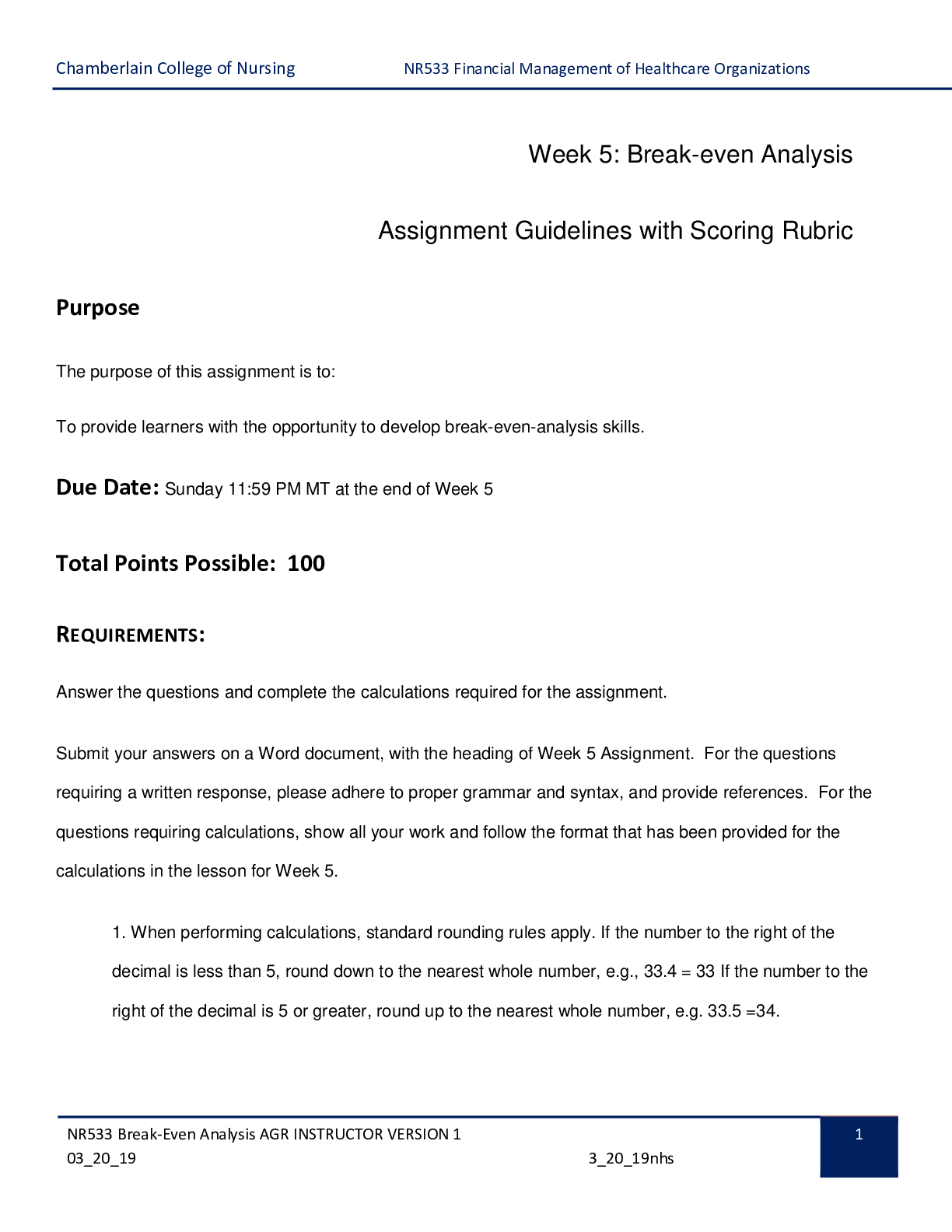

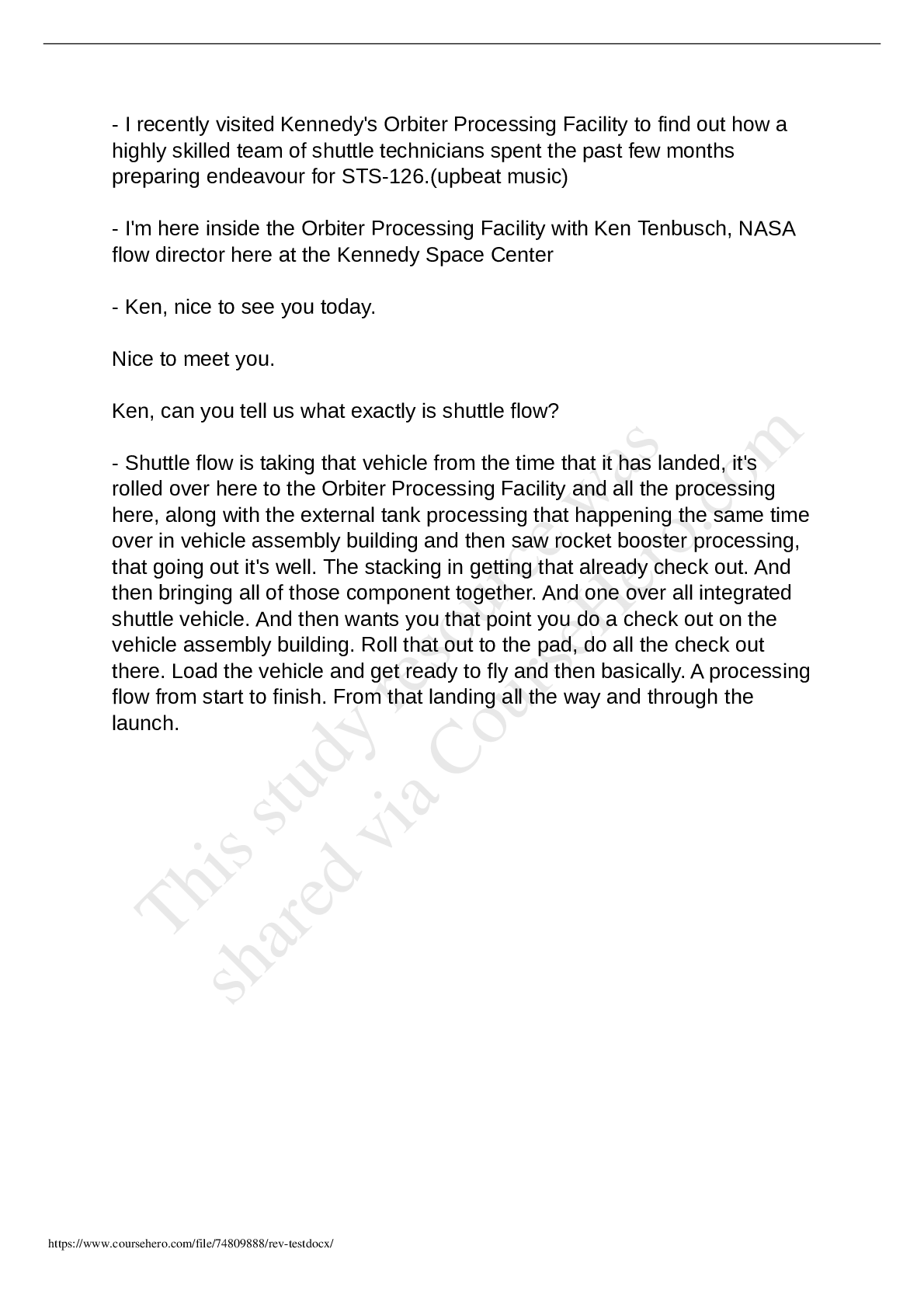
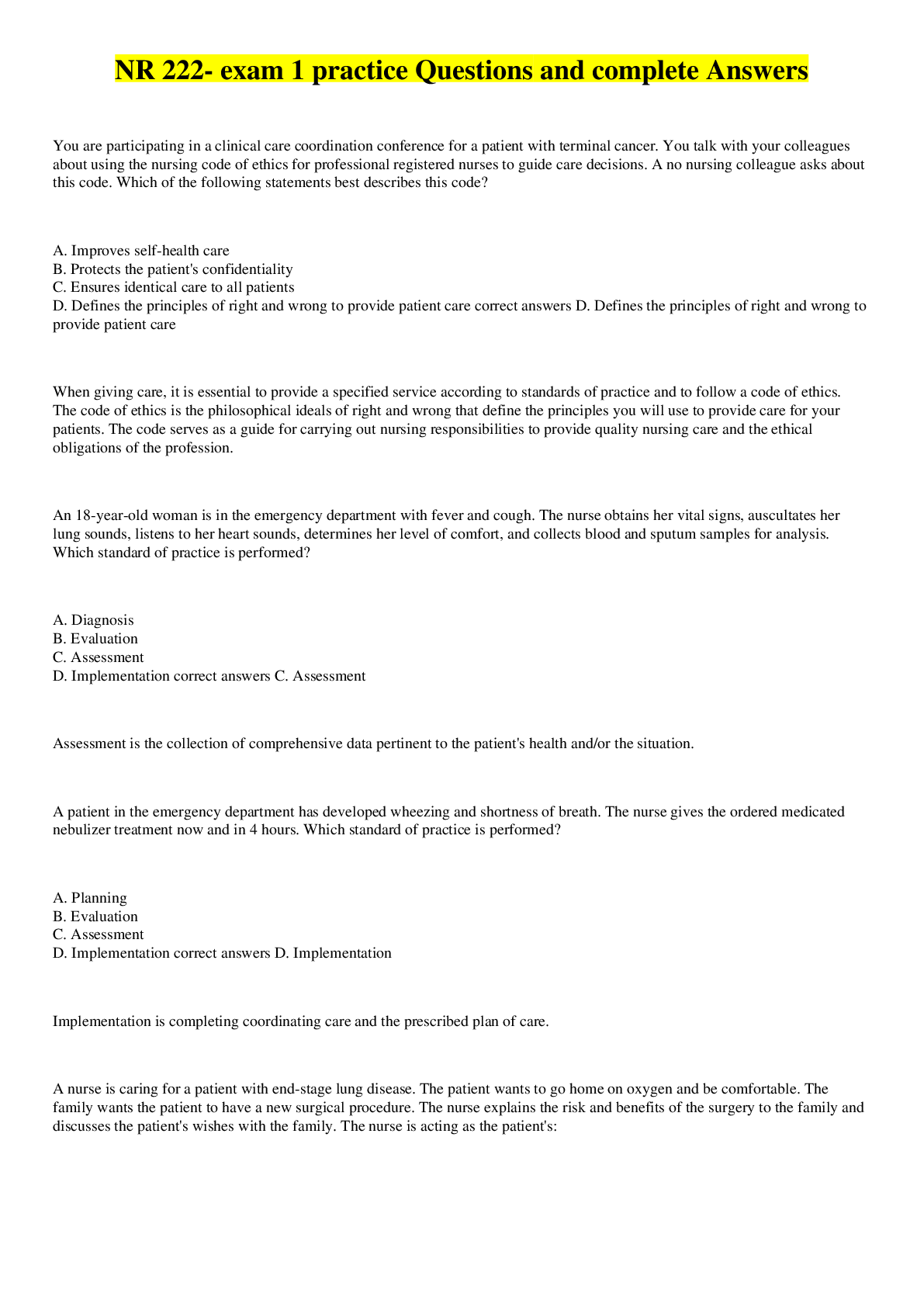
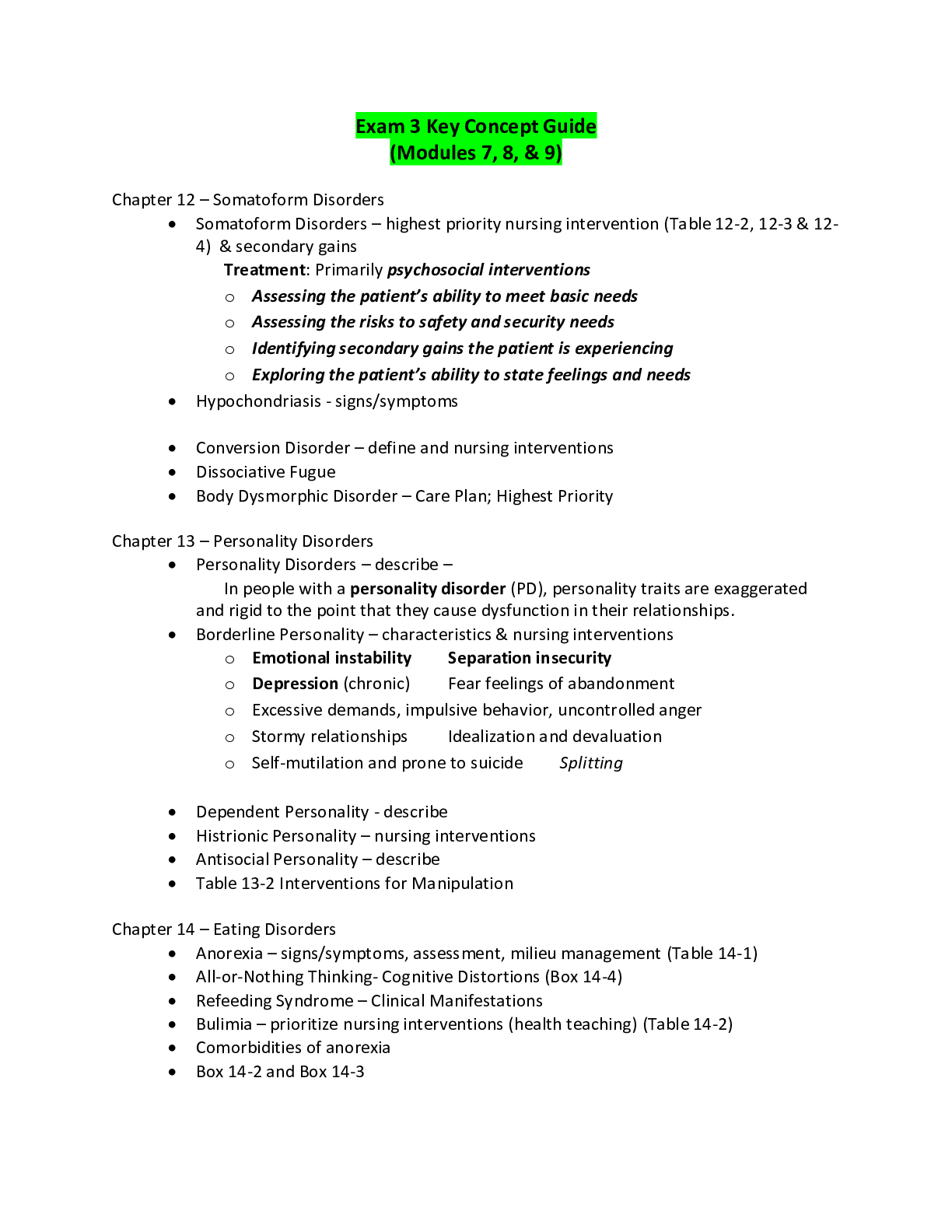
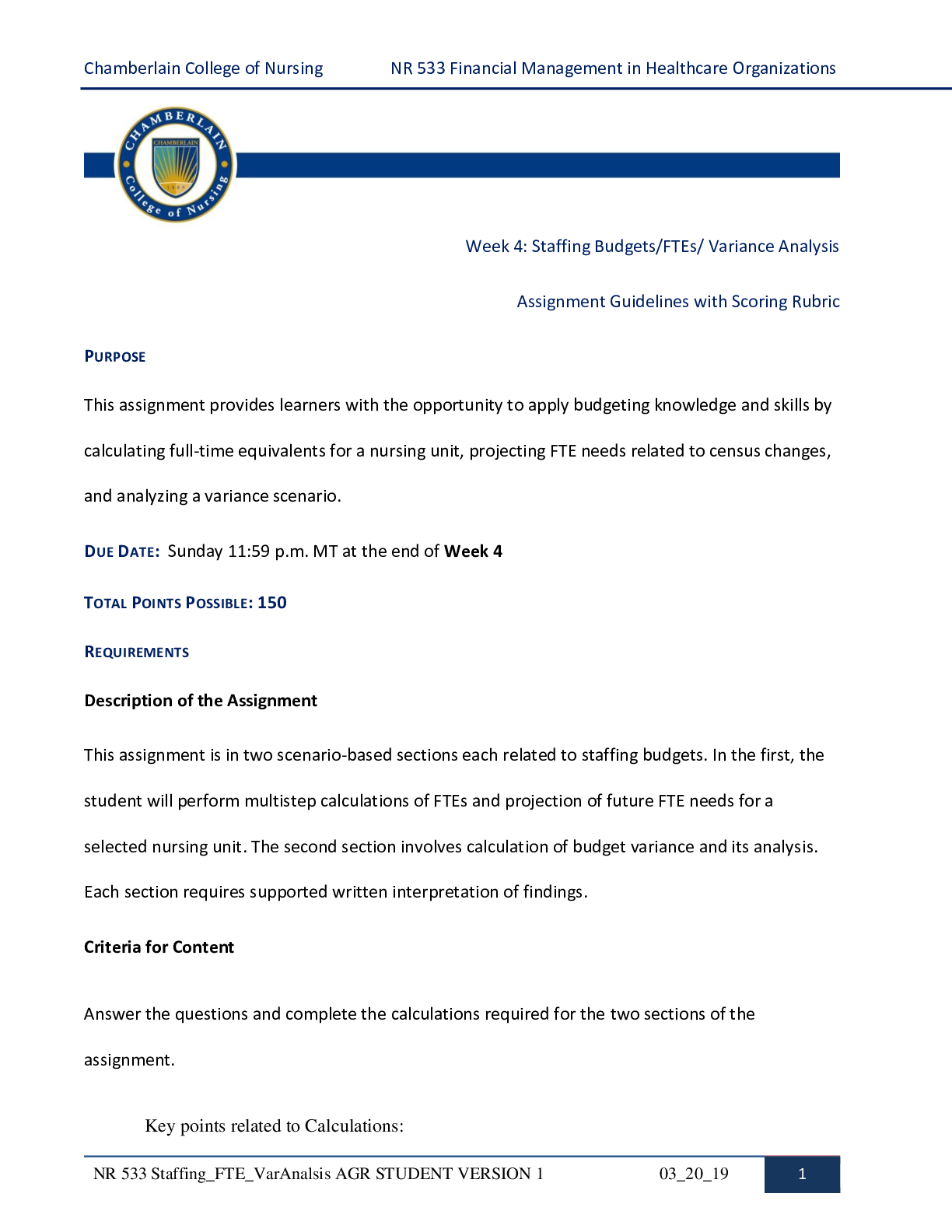
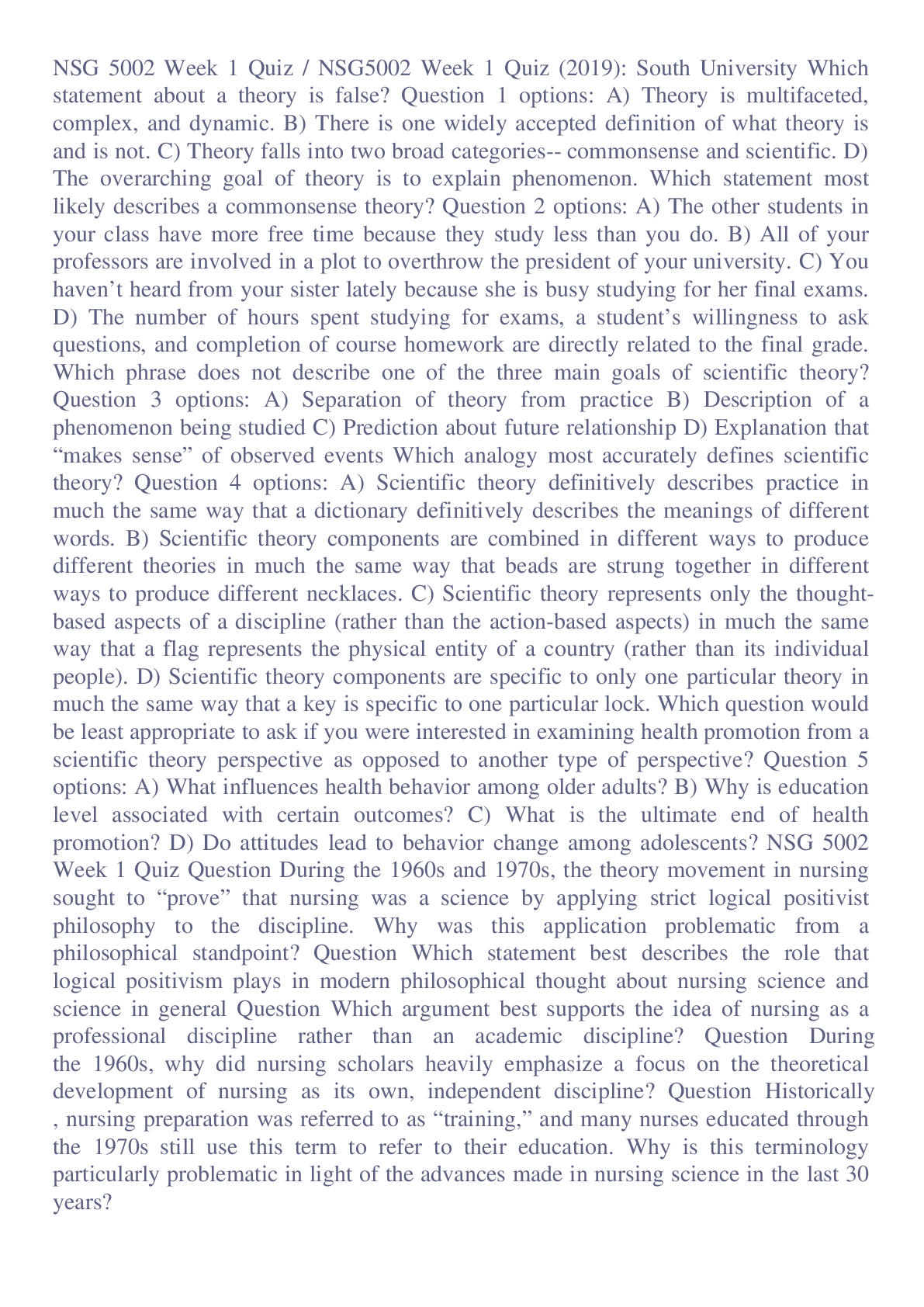
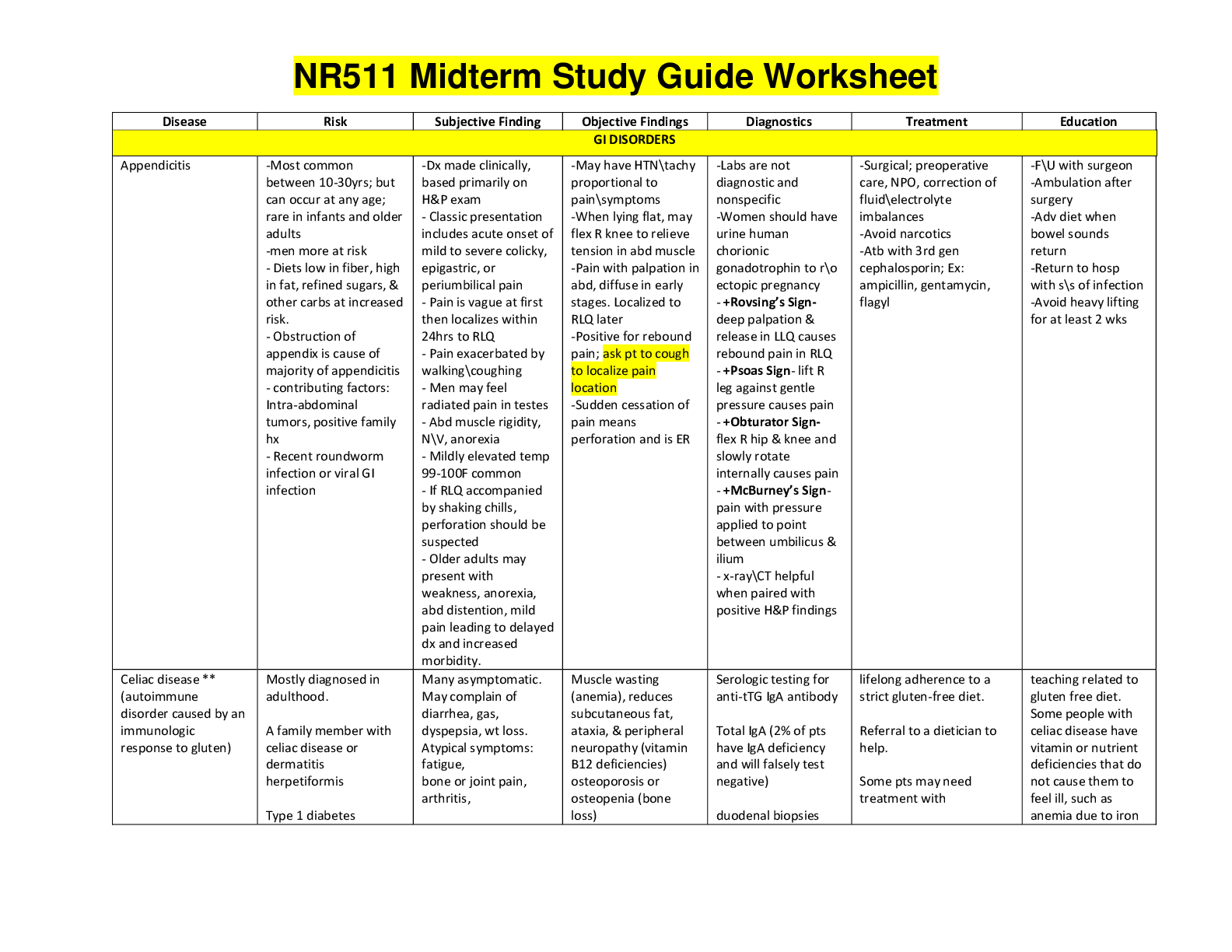
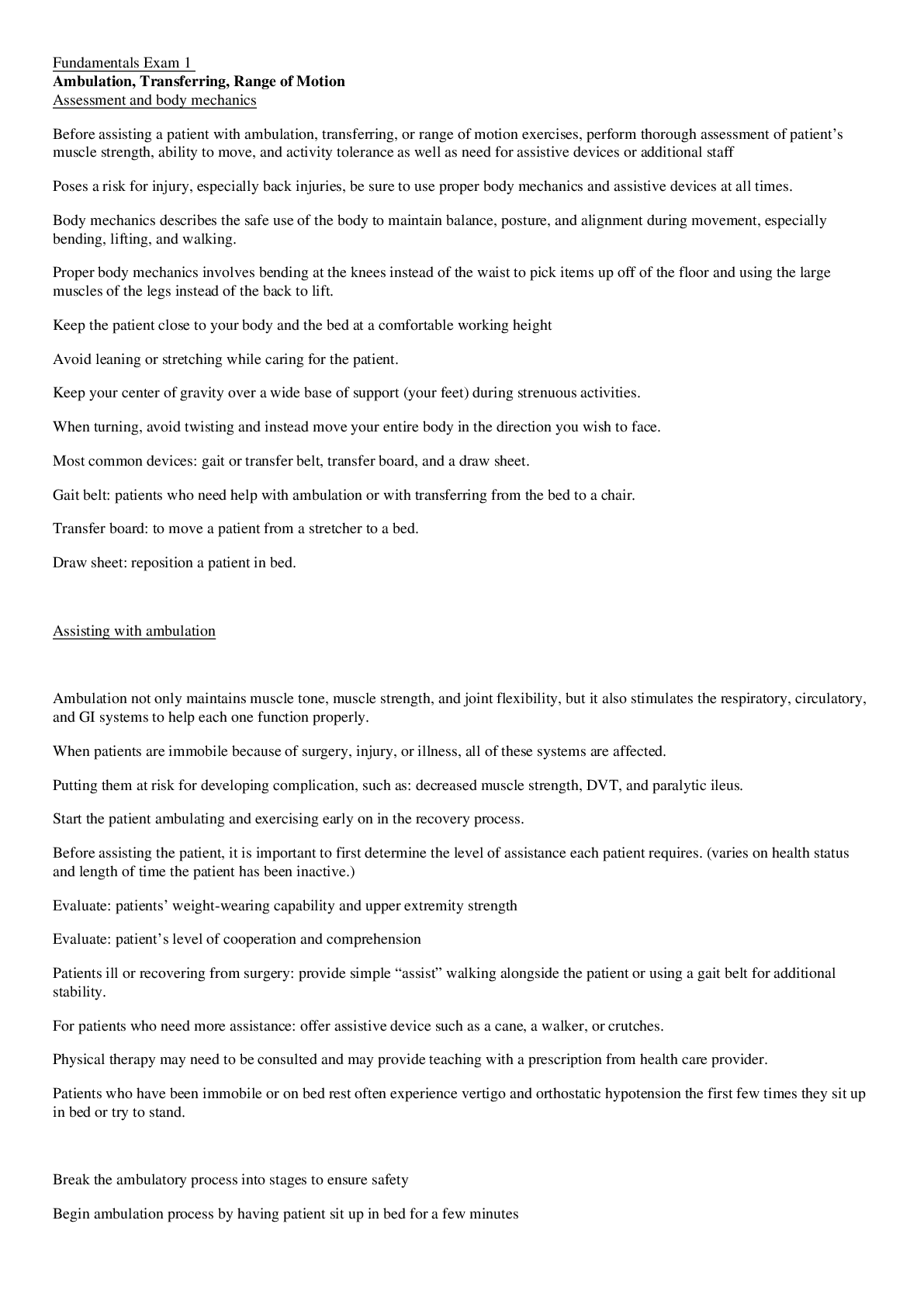

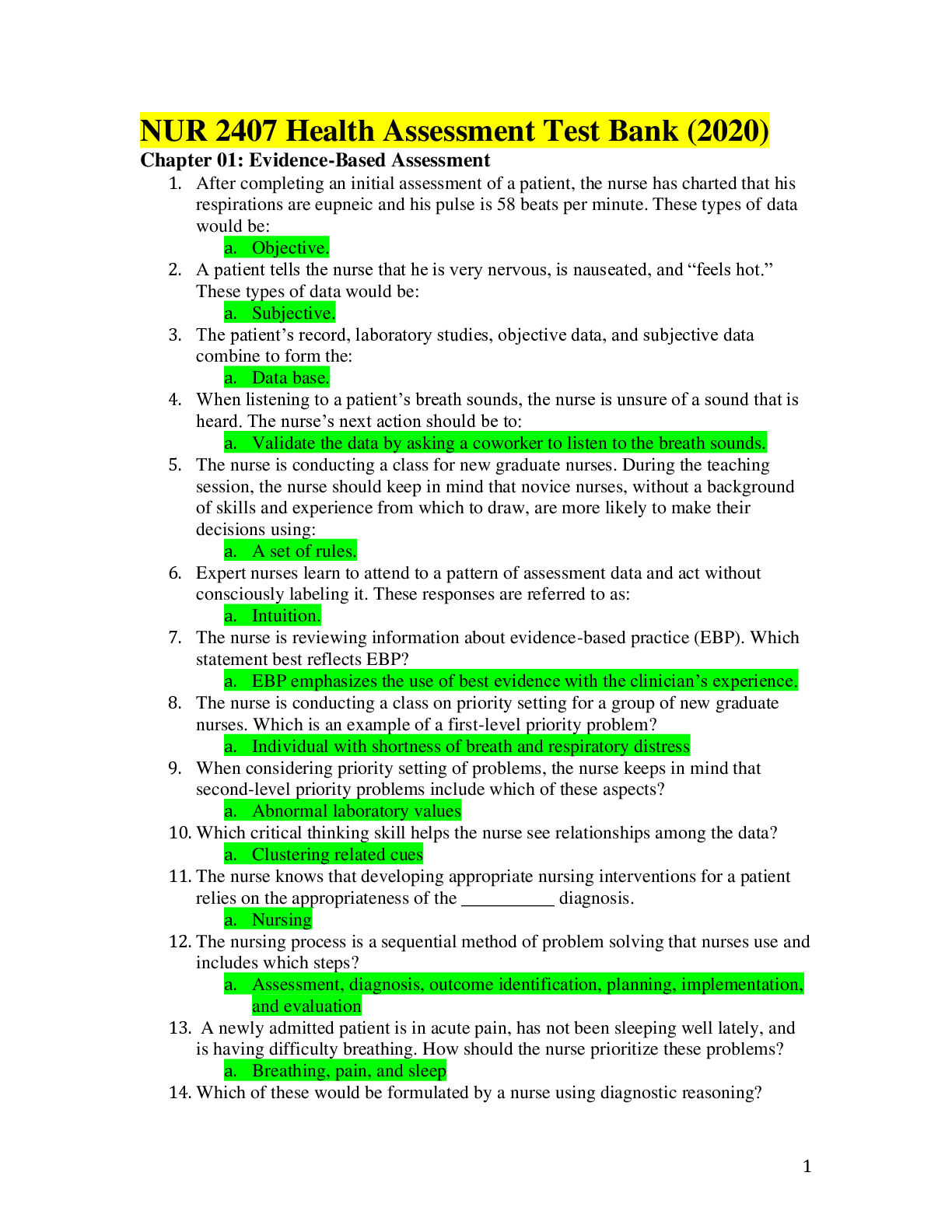
.png)
